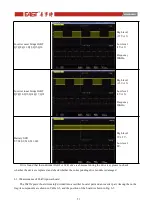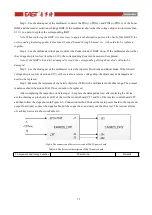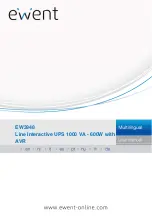
65
Fig.6-15 The key components identification of 30kVA IP/OP board
The detailed maintenance steps are as follows:
Step 1: Check whether the copper foil is corroded and rusted on the entire I/O board. You can use a
multimeter to assist in the inspection. If there is corrosion, the copper foil needs to be re-soldered.
Step 2: Visually inspect the entire I/O board for obvious burns or explosions, and replace if necessary.
Step 3: Use the diode gear of the multimeter to detect the PIN1(+)-PIN3(-) and PIN2(+)-PIN3(-) of the
charger IGBT. If the multimeter shows that the voltage drop is too low (less than 0.1V), you need to Replace the
corresponding IGBT.
Step 4: Use the multimeter diode gear to detect the driving Zener diode corresponding to the IGBT. If the
multimeter shows that the voltage drop is too low (less than 0.1V), the corresponding Zener diode needs to be
replaced.
Note: If the IGBT is found to be damaged in step 3, the corresponding driving Zener diode will also be
damaged.
Step 5: Use the diode gear of the multimeter to test the diode of the charger. If the forward voltage drop is too
low (less than 0.1V) or there is a voltage drop in the reverse direction, the diode may be damaged and needs to be
replaced.
Note: When replacing IGBT, diodes and SCR, it is necessary to smear heat dissipation paste on the back of
the devices. If the corresponding insulating gaskets are blackened, burned, burned through, burned, etc., they also
need to be replaced together.
After completing the inspection work in steps 1-5, replace the damaged device; after replacing the device,
use the shorting cap to short-circuit J2 of the rectifier control board CT1 and J2 of the inverter control board CT2,









































